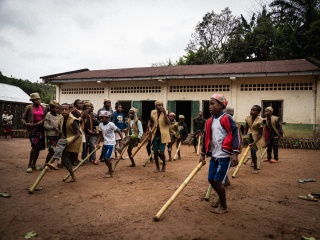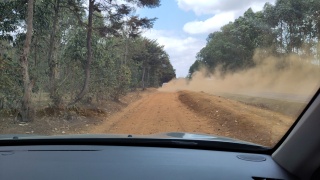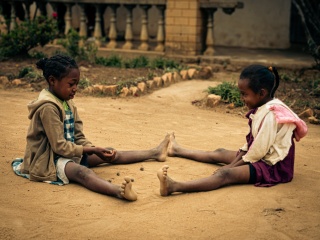
The need for Mary’s Meals in Madagascar
In Madagascar, children are risking their lives to survive. Receiving a daily meal at school would give these children hope of better, brighter future.
Published onIt's always a privilege to visit a country where Mary's Meals operates a school meals programme. Whether a small rural village, the bustling environment of an urban setting or a remote, vast desert, Mary's Meals reaches the poorest communities and offers a bearing of security and stability, amidst an otherwise often precarious existence, through the promise of a daily meal in a place of education.
On arrival at a school where the meals are served, parents, teachers, family members and the wider community are all extremely welcoming to visitors from Mary's Meals. And unsurprisingly so. We are there as representatives of the organisation who provides food to their children every school day, even if it is uncomfortable receiving thanks for something you feel no responsibility for having delivered.
But as such, we are always greeted warmly, often with singing and dancing, and happily shown around the school. On occasion we are presented with small gifts as a token of thanks – usually an item crafted locally or made at the school such as a cut of fabric or a small carving.

Travelling through Madagascar
On my most recent trip to our programme in Madagascar, accompanied by representatives from our partner Feedback Madagascar, the warm welcome at each school – the singing, the dancing, the gifts – were in abundance. We travelled significantly through the country over two weeks, navigating the treacherous main road which travels north to south. Our journey took us from the rain forests at Ranomafana to the dusty, arid Anja.
Mary's Meals serves a nutritious meal to more than 88,500 children, primarily in the central and southeast regions of this island nation. But with a population of 30 million and ranked amongst the poorest countries in the world, it is estimated that almost 9 million children live in poverty in Madagascar.
Above witnessing severe poverty or the overwhelming joy of children having a nutritious meal each day at school, there are usually one or two things that really stay with me when I travel to a Mary's Meals programme. Strangely, in Madagascar, the thing that really stayed with me occurred when travelling through areas without Mary's Meals.

Fixing potholes during school hours
We often say that without Mary's Meals, children might have to work or beg in order to get food for the day. As we travelled through the country, this was clear to see. The road was filled with potholes. Not the type of inconvenience pothole you might find in the west, but more like somewhere between the worst potholes you've driven over and an earthquake. As we ventured further south, what was left of the road became covered in the dry, orange, ash-like soil which formed the landscape.
Children would sometimes line the side of the road with their hands outstretched in the hope of receiving some change thrown from the moving car window. But their hands were orange. Their arms and legs were orange. Their hair was tinted orange. Their whole bodies and clothes were coated in the same orange ash which covered the road. Their faces were ash-covered aside from the stream of tears running from their eyes, which made a dark trail, like two scars down their cheeks, and the black stream collecting in a pool below their nose.
With each vehicle that passed, the dust would fly into the air and cover them, head to toe, in ash as they stood hopefully with their arms extended. The ash would be in their eyes and mouth, irritating their sinuses and causing their eyes and nose to run, while coughing out whatever made it into their mouth and lungs. It was as if they were wearing a mask, from behind which their pleading and desperate eyes followed the cars flying past.
But this wasn't just begging in the hope of being tossed some cash. The children were asking for payment for filling in the potholes in the road. They would run onto the road, collect the sand with their hands, fill in the potholes and jump back to the side of the road before they were hit by the next car coming along – risking their lives and their health in order to get some small change to survive. All this during school hours.

Mary's Meals in Madagascar
These ash-orange children with their eyes and nose streaming, holding out their hands and running alongside cars while being covered in dust are the very children we talk about who are waiting for Mary's Meals.
A nutritious daily meal served at their local school would mean they could attend class and give them the opportunity to receive an education, which would provide them with better prospects for their future. Instead, they are risking their lives in the hope of some money for food.
Help us reach the next child.
It costs just £19.15, €22, $25.20 USD or $31.70 CAD to provide a child with school meals for an entire school year. We currently serve daily meals to more than 88,500 children in primary schools, education centres and detention centres every school day. Your donation will help us reach more children in Madagascar – giving hope to the children and the communities they live in.
Graeme Bradley is our Video Producer at Mary’s Meals International. He recently visited Madagascar to document how Mary’s Meals provides nutritious daily meals to children in their place of education across the country.
